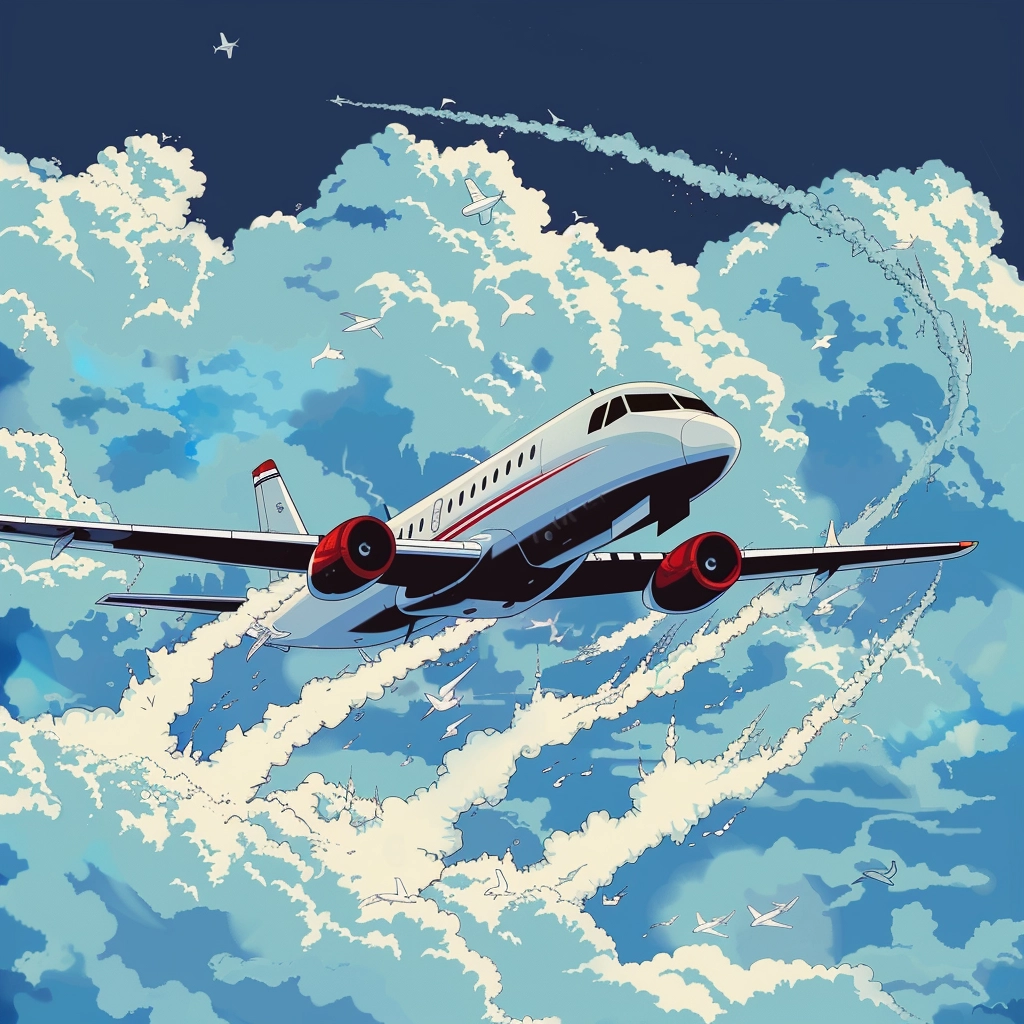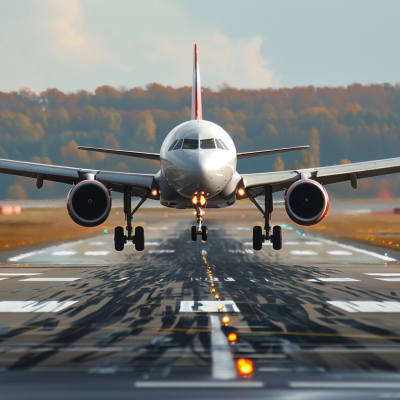Have you ever experienced that heart-stopping moment when your plane suddenly drops, shakes, or jolts due to turbulence?
It’s a scary feeling that leaves many passengers wondering, “Has a plane ever crashed from turbulence?” While rare, turbulence has contributed to some plane crashes throughout aviation history.
In this comprehensive analysis, we’ll examine specific incidents where turbulence played a role in flight safety and examine the impact of turbulence on that safety.
We’ll also explore the different types of turbulence, how pilots and aircraft are equipped to handle it, and what you can do to stay safe during a bumpy flight.
Fascinated by the science behind turbulence and the incredible advances in aviation technology that keep us safe in the skies.
So buckle up and join me on this journey as we uncover the facts about turbulence and plane crashes.
Historical Incidents and The Role of Turbulence in Aviation Accidents
Throughout aviation history, turbulence has played a significant role in numerous incidents and accidents.
While it’s extremely rare for turbulence alone to cause a plane crash, it can contribute when combined with other issues like mechanical failures or pilot errors.
Let’s look closely at some notable events where turbulence influenced the outcome.
1. BOAC Flight 911, a Boeing 707, Over Mount Fuji in Japan, 1966
One of the most infamous incidents involving severe turbulence occurred in 1966 when BOAC Flight 911, a Boeing 707, encountered strong clear-air turbulence over Mount Fuji in Japan.
The sudden violent updrafts and downdrafts caused the aircraft to break apart mid-air, tragically claiming the lives of all 124 passengers and crew on board.
2. United Airlines Flight 826, a Boeing 747, Over the Pacific Ocean, 1997
Fast forward to 1997, and we have the United Airlines Flight 826 case. This Boeing 747 encountered severe turbulence over the Pacific Ocean, leading to one passenger fatality and several serious injuries.
The turbulence was so intense that it threw passengers and crew around the cabin, causing chaos and terror among those on board.
3. A Delta Air Lines Flight from Orange County to Seattle in 2019
More recently, in 2019, a Delta Air Lines flight from Orange County, California, to Seattle, Washington, experienced sudden turbulence that sent three passengers to the hospital with minor injuries.
This incident serves as a stark reminder that even in modern times with advanced aircraft technology, turbulence can still pose a threat to passenger safety.
How Does Turbulence Affect an Aircraft’s Performance and Safety?

To understand this, we must look at the different types of turbulence and their impact on flight operations.
One of the most dangerous forms is clear-air turbulence (CAT), which often occurs near jet streams – those narrow, fast-flowing air currents in the upper atmosphere.
When an aircraft encounters CAT, it can experience sudden and violent updrafts, downdrafts, or side-to-side movements that put immense stress on the airframe and can potentially cause structural damage.
In addition to CAT, thunderstorms and wind shear pose significant risks to aircraft. Thunderstorms can produce severe turbulence, heavy rain, hail, and lightning strikes that can damage the plane’s exterior or disrupt its electronic systems.
Wind shear, on the other hand, is a sudden change in wind speed or direction that can cause a rapid loss or gain in altitude, making it difficult for pilots to control the aircraft during takeoff or landing.
To mitigate these risks, pilots rely on weather forecasts, radar systems, and real-time reports from other flights to avoid areas of known turbulence.
However, even with these tools at their disposal, encountering turbulence is sometimes unavoidable, especially in regions prone to unstable air conditions.
Modern aircraft are designed to withstand the stresses of turbulence, and pilots are trained to handle these situations with skill and professionalism.
So, while turbulence has undoubtedly played a role in past aviation accidents, keeping things in perspective is important.
Millions of flights take to the skies every year, most of which navigate turbulence without incident.
Technologies and Methodologies for Turbulence Detection and Management
Have you ever wondered how pilots and airlines work to detect and manage turbulence, keeping us safe in the skies? Let’s dive into the fascinating world of turbulence detection and management technologies.
Gust Load Alleviation: Smoothing Out the Bumps
- Imagine if your plane could anticipate and counteract turbulence, providing a smoother ride. That’s exactly what gust load alleviation systems aim to do!
- Using sensors that detect sudden changes in air pressure, these smart systems rapidly adjust the aircraft’s control surfaces (like flaps and spoilers) to reduce the impact of turbulence.
- The result? A more comfortable flight for you and less stress on the aircraft’s structure. Pretty cool, right?
Wind Shear Detection: Spotting Danger Ahead
- Wind shear – sudden changes in wind speed or direction – can be a serious hazard during takeoff and landing. But with advanced onboard sensors, pilots can detect wind shear before it’s too late.
- Doppler radar and LIDAR (light detection and ranging) systems can spot wind shear up to 5 miles ahead of the aircraft, giving pilots precious time to react and avoid potential accidents.
- These technologies have revolutionized wind shear detection, making takeoffs and landings safer.
FAA Initiatives: Guiding Airlines to Safer Skies
- The Federal Aviation Administration (FAA) isn’t just sitting back regarding turbulence safety. They’re actively working with airlines to minimize risks and keep passengers secure.
- The FAA’s Turbulence program provides guidance and best practices for airlines to reduce turbulence-related injuries. These include improved weather forecasting and passenger education.
- Airlines participating in FAA’s Turbulence program have significantly reduced turbulence injuries – a testament to the power of collaboration between the FAA and the aviation industry.
Real-Time Turbulence Reporting: Knowledge is Power
- Have you ever wondered how pilots know when to turn on the “fasten seatbelt” sign? It’s all thanks to real-time turbulence reporting.
- Pilots and air traffic controllers share up-to-the-minute information about turbulence encounters, helping other flights avoid rough patches.
- The FAA’s Turbulence Auto PIREP System (TAPS) takes this a step further, automatically generating turbulence reports based on data from participating aircraft. This means more accurate, timely information for everyone in the skies.
Turbulence Forecasting: Predicting the Unpredictable
- While we can’t control the weather, advanced turbulence forecasting models are getting better at predicting where and when turbulence will strike.
- These sophisticated models can analyze weather patterns, atmospheric conditions, and historical data to warn airlines about potential turbulence hotspots.
- With this information, pilots can adjust their routes and altitudes to minimize their chances of experiencing a bumpy ride.
Preventive Measures and Safety Protocols for Passengers and Crew
Here are some crucial preventive measures and safety protocols that passengers and crew can follow to minimize the risk of turbulence-related injuries.
Buckle Up: Your First Line of Defense
- The FAA’s golden rule for turbulence safety is to keep your seatbelt fastened at all times when seated, even if the seatbelt sign is off.
- Turbulence can strike unexpectedly, so it’s better to be buckled up than caught off guard. Fasten your seatbelt as soon as you sit down and double-check that it’s secure before takeoff and landing.
- And if you need to move around the cabin, wait for a calm moment and always hold onto sturdy surfaces for support.
Pay Attention to Safety Briefings: Knowledge is Power
- I know – safety briefings can feel repetitive, especially for seasoned travelers. But trust me, they’re worth listening to!
- Flight attendants are trained to provide you with vital information about turbulence safety procedures, including the proper brace position and how to secure loose items.
- So next time you’re tempted to tune out the safety briefing, remember: those few minutes of attention could make all the difference in an emergency.
Stow and Secure: Keeping Loose Items in Check
- You know that moment when the plane hits a rough patch, and everything starts rattling around? That’s exactly what we want to avoid.
- The FAA recommends properly stowing loose items like laptops, bags, and drinks during turbulence to prevent them from becoming dangerous projectiles.
- If you must use your electronic devices or eat during the flight, keep a firm grip on them and be prepared to stow them quickly if turbulence hits.
Crew Training: Preparing for the Bumps
- Did you know that flight attendants undergo rigorous turbulence safety training? It’s true!
- Airlines invest heavily in preparing their crew to handle turbulence, from recognizing warning signs to securing the cabin and assisting passengers.
- Flight attendants learn advanced first aid techniques, including assessing and treating turbulence-related injuries, so you can feel confident that you’re in good hands.
Turbulence Avoidance: A Team Effort
- While pilots can’t always steer clear of turbulence, they have strategies to minimize your chances of a bumpy ride.
- Pilots work closely with air traffic control and use onboard weather radar to identify and avoid areas of severe turbulence whenever possible.
- If they encounter turbulence, pilots are trained to adjust altitude or change course to find smoother air while keeping you informed and reassured.
Conclusion
By understanding the causes and effects of turbulence, from atmospheric pressure changes to the impact on aircraft performance, we’ve gained a deeper appreciation for the challenges pilots and passengers face in the skies.
We’ve also seen how historical incidents, like the tragic loss of BOAC Flight 911 in 1966, have shaped our understanding of turbulence and spurred the development of new safety technologies and protocols.
Today, thanks to advanced detection systems, gust alleviation techniques, and rigorous crew training, the aviation industry is better equipped than ever to manage the risks associated with turbulence.
FAA initiatives and international collaboration have fostered a safety culture, ensuring passengers and crew have the knowledge and tools to navigate even the bumpiest of flights.
You can confidently navigate even the most challenging skies by staying informed, following safety guidelines, and trusting in your crew’s expertise.






